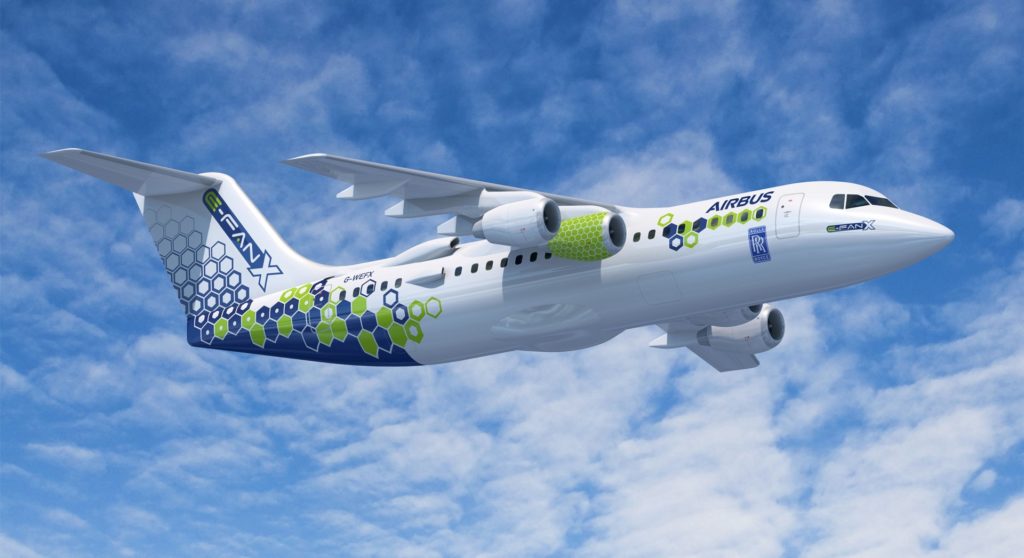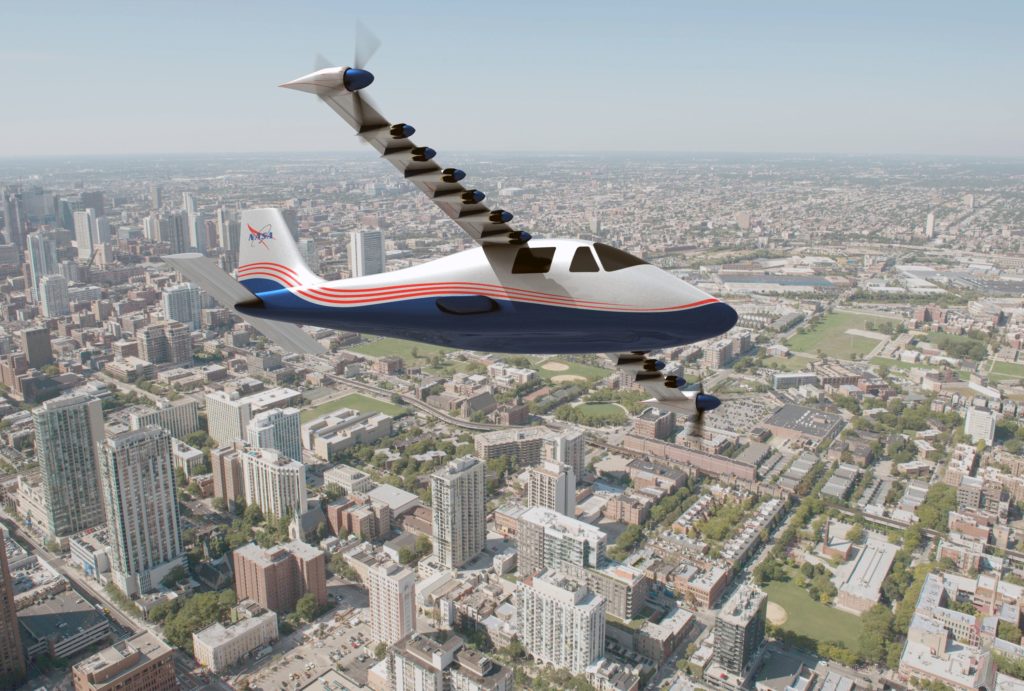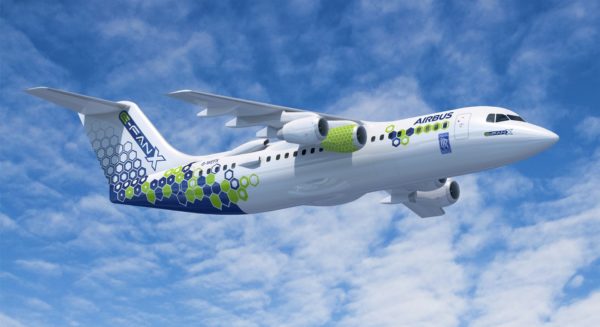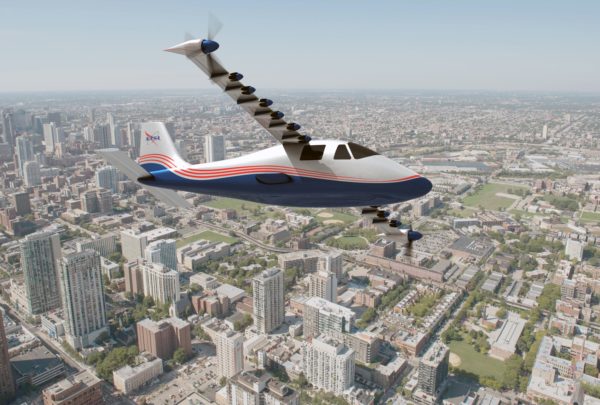Alpha Electro
Already on offer are one- and two-seater battery-powered aircrafts, such as the Alpha Electro from the Slovenian company Pipistrel. This is a two-seater electric trainer with a performance tailored to the needs of flight schools. It has a short take-off distance, a strong climbing ability of over 1.000 fpm, an endurance of one hour and a 30-minute reserve. The Alpha Electro is optimized for traffic pattern operation, where up to 13 percent of the energy is recovered during each approach phase, increasing the operating range and enabling short-field landings. The manufacturer Pipistrel describes it as a revolutionary aircraft that can fly at one Euro energy cost per hour.
E-Fan X
In the meantime, even larger aircrafts, such as the E-Fan X, are still on the drawing board or are being built as prototypes. The industrial groups Airbus and Siemens want to build a hybrid-electric aircraft together with the engine manufacturer Rolls Royce. A commercial airplane with an electric motor and three conventional jet engines. Siemens is developing the electric motor, which will have an output of 20 megawatts, and one aircraft will have four to eight of these motors. The engines will be powered by a gas turbine built by Rolls Royce, which will also charge a rechargeable battery.
Finally, Airbus will integrate the propulsion system into the airplane. The prototype will be installed in a British Aerospace BAe 146 , which is planned to fly for the first time in 2021. Rolls Royce Technical Director Paul Stein says the hybrid aircraft marks the beginning of a new era in aviation.
Alice
And there’s Alice, a 100 percent electric airliner made by Eviation Aircraft from Israel, whose prototype delighted visitors at the Paris Air Show in June. It is being developed as a feeder airplane and will carry nine passengers over a distance of up to 1.000 kilometers. This means that its performance parameters are significantly higher than those of other electric aircrafts presented so far. Eviation Aircraft estimates the operating costs at one-fifth of those of conventional aircrafts.
Alice has three engines: One at the tail and two at the wingtips for maximum efficiency. The three 260 kW electric motors each drive adjustable pressure propellers. The lithium-ion battery has a capacity of 900 kWh and a mass of 3.600 kg, which is about 60 percent of the maximum take-off mass. Should one of the engines fail at the wingtips, the electronics would also downgrade the opposite engine and greatly increase the output of the rear engine. The airplane should also remain airworthy with the tail rotor alone.
According to the manufacturer, Alice is the first aircraft with electronic flight control, which is designed for an electric drive right from the start. The aircraft has two fuselage sockets. With a charging time of half an hour, a flight time of one hour should be possible. Alice could already fly commercially in 2022.
X-57 Maxwell
Even further in the future, we could see aircrafts with up to fourteen electric engines above the leading edge of the wings. The X-57 Maxwell is an experimental aircraft developed by NASAto demonstrate technology to reduce fuel consumption, emissions and noise. All 14 engines would be used for take-off and landing, while only those at the wingtips would power the travel phase of the flight.
The additional airflow on the wings, generated by the auxiliary motors, provides more lift and allows a narrower wing. Designed for two people, the aircraft will have a range of 160 kilometers. And a maximum flight time of approximately one hour. The designers of the X-57 Maxwell want to reduce the energy required to fly a light aircraft at 282 km/h by a factor of five. A threefold reduction should be achieved by switching from piston engines to battery electrics.
Decentralized propulsion increases the number and reduces the size of the aircraft engines. Electric motors are much smaller and lighter than jet engines of the same power. This allows them to be placed in different, more convenient locations. In this case, the engines must be mounted at the top and distributed along the wings rather than hanging under them.
As you can see, we already have a large number of inventions to enable emission-free flying. However, enormous improvements in battery technology are still needed. Currently, aviation fuel provides many times more energy per kilogram than batteries. In order to have fully electric commercial aircrafts, the power-to-weight ratio of batteries must be drastically improved.
Until then, engineers will shape the future of flying by dreaming big and starting small, but even in this century, electric propulsion could change the way we fly…



